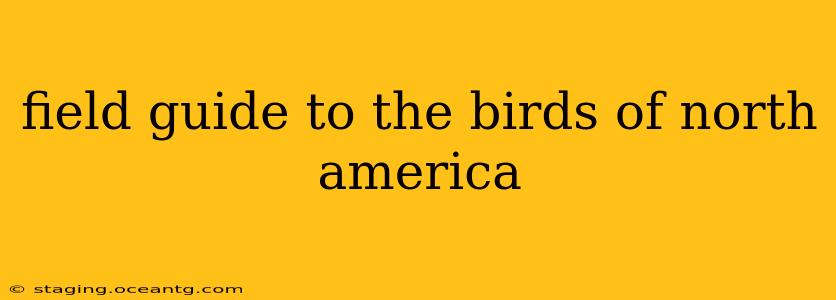North America boasts an incredible avian diversity, from the majestic bald eagle to the tiny hummingbird. Whether you're a seasoned birder or just beginning your journey into the fascinating world of ornithology, a comprehensive field guide is an indispensable tool. This guide explores the key features of a successful field guide, helping you choose the best one for your needs and maximizing your birdwatching experiences.
What Makes a Great Field Guide to North American Birds?
Choosing the right field guide is crucial for successful bird identification. A good field guide should be:
- Comprehensive: Covering a wide range of North American bird species, including variations in plumage based on age and sex.
- Visually Appealing: Featuring high-quality photographs or illustrations that accurately depict bird features. Detailed range maps are also essential.
- User-Friendly: Easy to navigate with a clear index, concise descriptions, and a logical organization system (e.g., by family or order).
- Portable: Lightweight and compact enough for convenient use in the field.
- Up-to-Date: Reflecting current taxonomic classifications and incorporating the latest research on bird identification.
What Information Should a Field Guide Include?
A top-notch field guide provides much more than just pictures. Look for guides that include:
- Detailed Species Descriptions: Covering size, shape, plumage, behavior, habitat, song, and call.
- Range Maps: Showing the geographic distribution of each species throughout North America.
- Detailed Illustrations or Photographs: Showcasing multiple views of each bird, including males, females, and juveniles, where applicable.
- Similar Species Comparisons: Highlighting key differences between species that might be easily confused.
- Glossary of Terms: Explaining common ornithological terms.
Which Field Guide is Right for Me?
The ideal field guide depends on your experience level and preferences. Beginners might appreciate guides with simpler descriptions and fewer species, while experienced birders might prefer more detailed guides with advanced identification features. Consider these factors:
- Your Experience Level: Are you a beginner, intermediate, or advanced birder?
- Geographic Location: Do you need a guide covering the entire continent or a specific region?
- Preferred Visuals: Do you prefer photographs or illustrations?
- Level of Detail: How much information do you need per species?
What are the Best Field Guides Available?
Several excellent field guides cater to various needs. Research and compare different options based on the criteria mentioned above. Many reputable publishers offer high-quality field guides, so explore their catalogues. Reading reviews from other birders can also be extremely helpful in making your decision.
How Can I Use a Field Guide Effectively?
Mastering the art of using a field guide effectively enhances your birdwatching experience. Here are some tips:
- Start with the Basics: Begin by familiarizing yourself with the guide's organization and features.
- Observe Carefully: Pay close attention to details such as size, shape, color, markings, behavior, and habitat.
- Narrow Down Possibilities: Use the guide's index or key features to narrow down the possibilities.
- Compare Similar Species: Pay close attention to subtle differences between similar species.
- Practice, Practice, Practice: The more you use your field guide, the better you'll become at identifying birds.
How Do I Keep My Field Guide in Good Condition?
To prolong the life of your field guide, consider these tips:
- Protective Cover: Use a waterproof and durable cover to protect it from the elements.
- Careful Handling: Avoid bending or creasing the pages.
- Regular Cleaning: Gently wipe away any dirt or debris.
This guide offers a starting point for selecting and using a field guide to the birds of North America. Happy birding!
